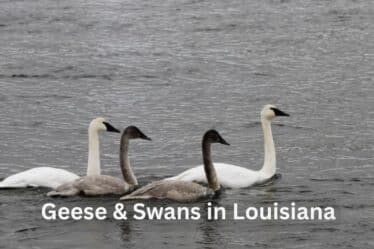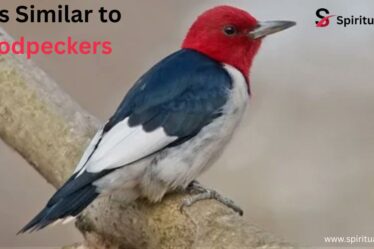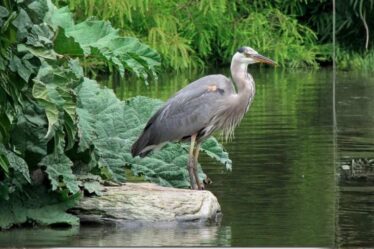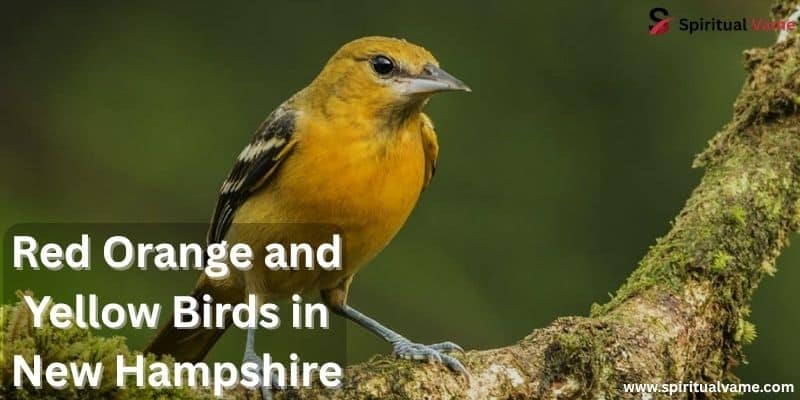
Red orange and yellow birds in New Hampshire bring bright color to forests, backyards, and fields. These beautiful birds are easy to spot with their vibrant feathers and cheerful songs. In every season, birdwatchers enjoy looking for them across the state. Some stay all year, while others visit only during migration.
This article will explore the many red orange and yellow birds in New Hampshire, from the flashy Northern Cardinal to the tiny Yellow Warbler. You’ll learn how to identify each one, where they live, and what makes them special. If you love colorful birds, you’re in the right place. Let’s discover these amazing birds together!
Some Red Birds in New Hampshire
New Hampshire’s forests and backyards are full of vibrant red birds that bring color and energy to every season. These crimson beauties are easy to spot against the greenery—or even snow—making them favorites among birdwatchers. From bold cardinals to flashes of scarlet tanagers, these red-feathered visitors are a true delight. Let’s take a closer look at some of the most eye-catching ones.
House Finch – Haemorhous mexicanus
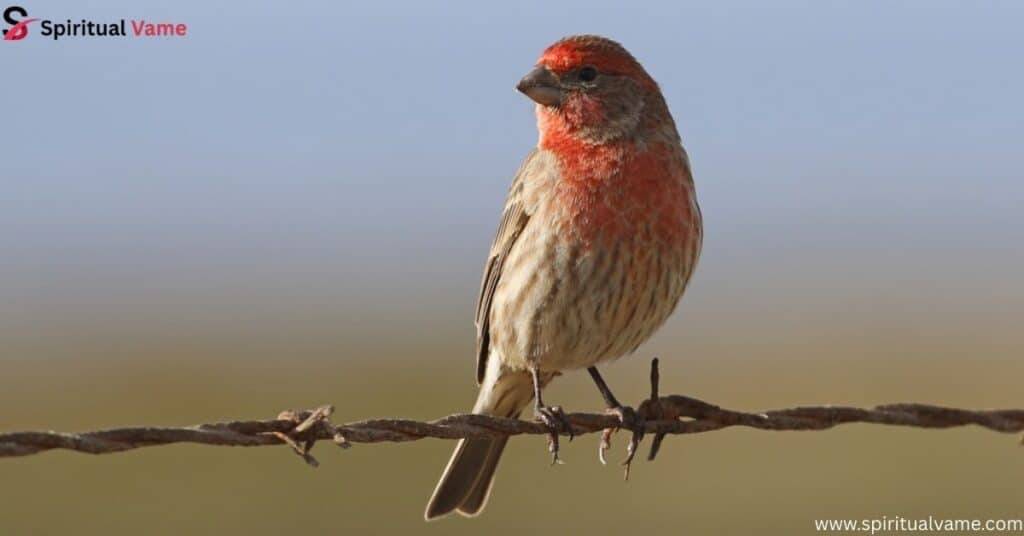
The House Finch is a common sight in New Hampshire, especially around feeders and urban areas. Males display a bright red head and chest, contrasting with their brown-streaked back and wings. Females are more subdued, with grayish-brown plumage. These finches are adaptable, often nesting in building crevices and ledges. Their cheerful song and social nature make them favorites among birdwatchers.
Purple Finch – Haemorhous purpureus
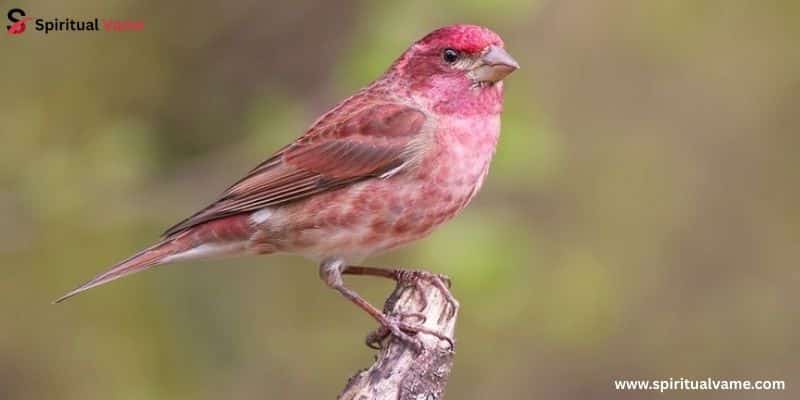
Designated as New Hampshire’s state bird, the Purple Finch is a year-round resident. Males boast a raspberry-red coloration covering their head and chest, while females have a more muted brown pattern with distinct facial markings. They prefer coniferous and mixed forests but are also attracted to feeders offering sunflower seeds.
Red Crossbill – Loxia curvirostra
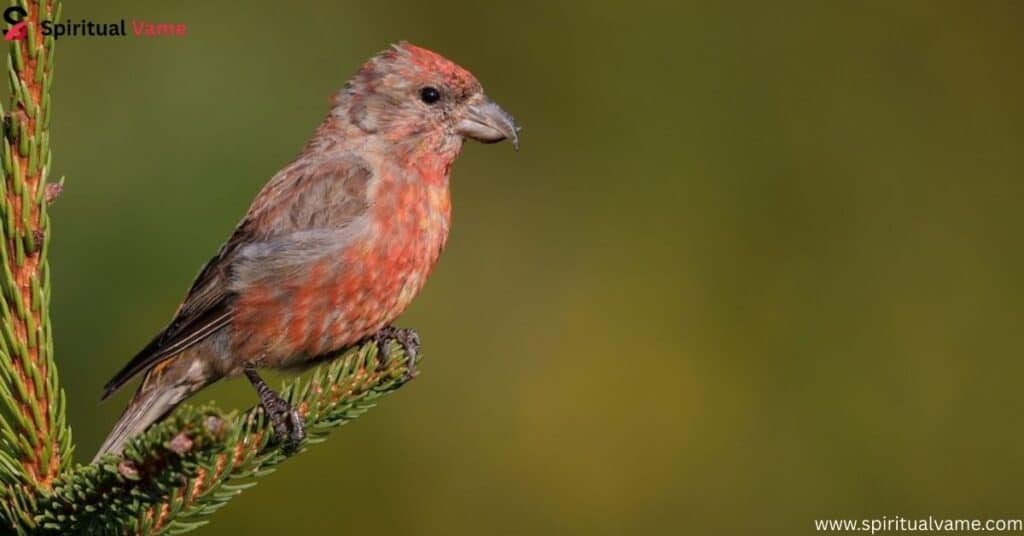
The Red Crossbill is notable for its unique crossed bill, adapted for extracting seeds from conifer cones. Males exhibit a brick-red hue, while females are more olive or yellowish. These birds are nomadic, moving in flocks in search of abundant cone crops. Their presence in New Hampshire varies year to year, depending on food availability.
White-winged Crossbill – Loxia leucoptera
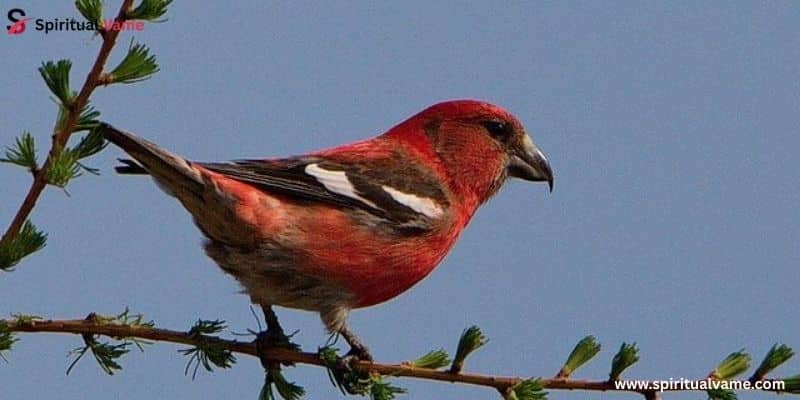
Similar to the Red Crossbill, the White-winged Crossbill has a specialized bill for feeding on conifer seeds. Males are rosy-red with distinctive white wing bars, whereas females are yellowish with the same wing markings. They inhabit boreal forests and are more commonly seen in the northern parts of New Hampshire.
Pine Grosbeak – Pinicola enucleator
The Pine Grosbeak is a large, plump finch found in northern forests. Males are a soft rose-red, while females are gray with hints of yellow or orange. They feed on seeds, buds, and fruits, often seen in flocks during winter months. Their gentle demeanor and melodic calls make them a delight to observe.
Northern Cardinal – Cardinalis cardinalis
The Northern Cardinal is a striking bird with vivid red plumage in males and warm brown tones in females, both featuring a distinctive crest and black facial mask. They are common in woodlands, gardens, and suburban areas, known for their rich, whistling songs. Cardinals are non-migratory, providing year-round color to New Hampshire’s landscapes.
Summer Tanager – Piranga rubra
The Summer Tanager is the only all-red bird in North America. Males are entirely red, while females are yellowish. They inhabit open woodlands and are insectivorous, often catching bees and wasps mid-flight. Though more common in the southern U.S., they occasionally appear in New Hampshire during migration.
Rose-breasted Grosbeak – Pheucticus ludovicianus
Males of this species are black and white with a bright rose-red patch on the chest, while females are brown with streaked underparts. They favor deciduous forests and are known for their melodious songs. During migration, they visit feeders, especially those offering sunflower seeds.
Painted Bunting – Passerina ciris
The Painted Bunting is renowned for its vibrant coloration—males display a mix of blue, green, red, and yellow, making them one of the most colorful birds in North America. They prefer dense brush and woodland edges. While primarily found in the southeastern U.S., rare sightings occur in New Hampshire during migration.
Common Redpoll – Acanthis flammea
These small finches are winter visitors to New Hampshire, recognizable by their red forehead patch and black chin. Males may show a pinkish wash on the chest. They form flocks and are frequent visitors to feeders, especially during irruption years when food is scarce in their northern habitats.
Some Orange Birds in New Hampshire
Red-breasted Nuthatch – Sitta canadensis
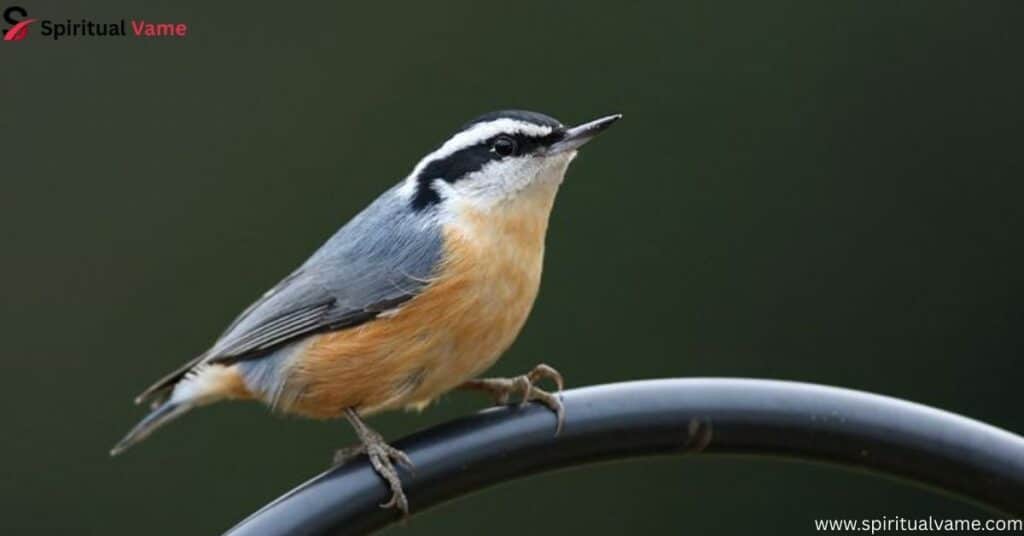
The Red-breasted Nuthatch is a small bird with a blue-gray back, white face with a black stripe through the eye, and a rusty-orange breast. They are agile climbers, often seen moving headfirst down tree trunks. These birds are common in coniferous forests and visit feeders offering suet and sunflower seeds.
American Redstart – Setophaga ruticilla
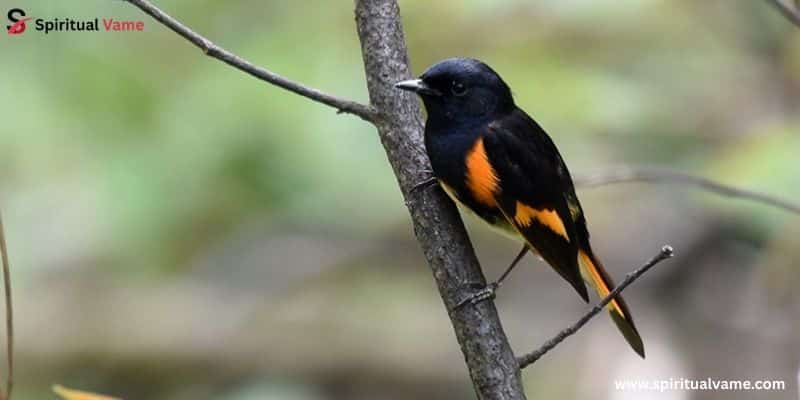
Male American Redstarts are black with bright orange patches on the sides, wings, and tail, while females are gray with yellow patches. They are active insectivores, flitting through trees with rapid movements. These warblers breed in deciduous forests and are common during migration periods.
Barn Swallow – Hirundo rustica
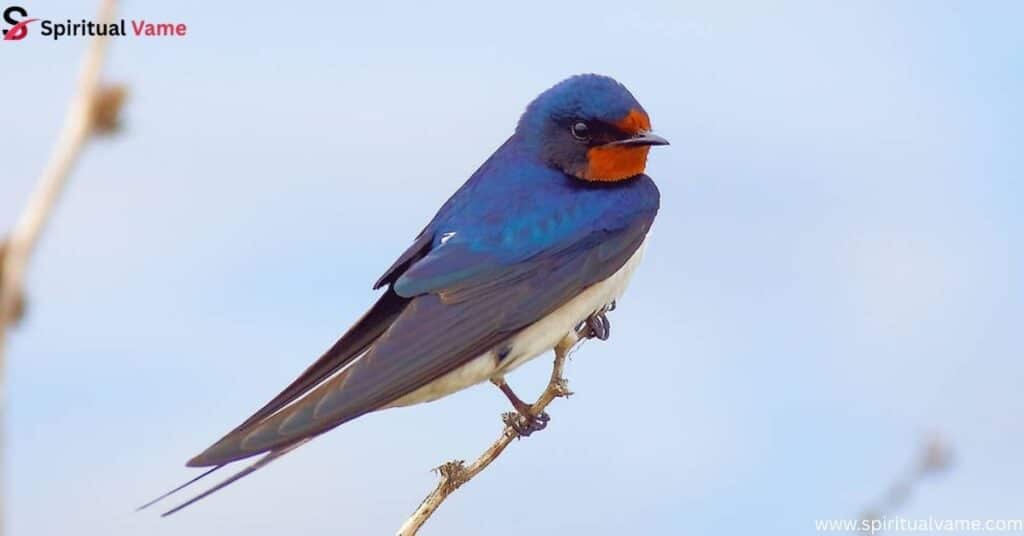
Barn Swallows have a glossy blue back, rufous throat, and a long, deeply forked tail. They are agile fliers, often seen swooping over fields and water bodies catching insects. These birds build cup-shaped mud nests on buildings and other structures.
Baltimore Oriole – Icterus galbula
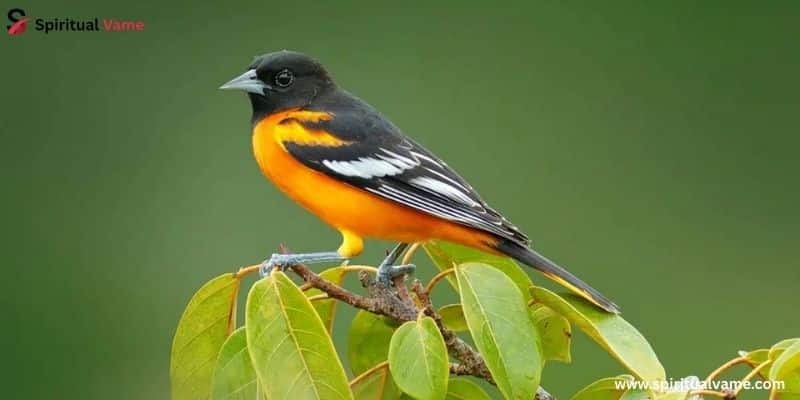
Male Baltimore Orioles are bright orange with black heads and backs, while females are more yellow-orange. They prefer open woodlands and are attracted to fruit and nectar feeders. Their hanging, woven nests are often found in tall trees.
Wood Thrush – Hylocichla mustelina
The Wood Thrush has a warm brown back and a white belly with bold black spots. They are known for their flute-like, ethereal song. These birds inhabit deciduous forests with dense understory and are more often heard than seen.
Eastern Towhee – Pipilo erythrophthalmus
Male Eastern Towhees are black above with rufous sides and a white belly, while females are brown where males are black. They forage on the ground in dense brush, scratching through leaf litter for insects and seeds. Their distinctive “drink-your-tea” song is a common sound in shrubby habitats.
Scarlet Tanager – Piranga olivacea
Male Scarlet Tanagers are brilliant red with black wings and tail, while females are olive-yellow. They inhabit mature deciduous forests and are more often heard than seen, as they stay high in the canopy. Their song is a series of burry phrases, similar to a robin with a sore throat.
Some Yellow Birds in New Hampshire
Common Yellowthroat – Geothlypis trichas
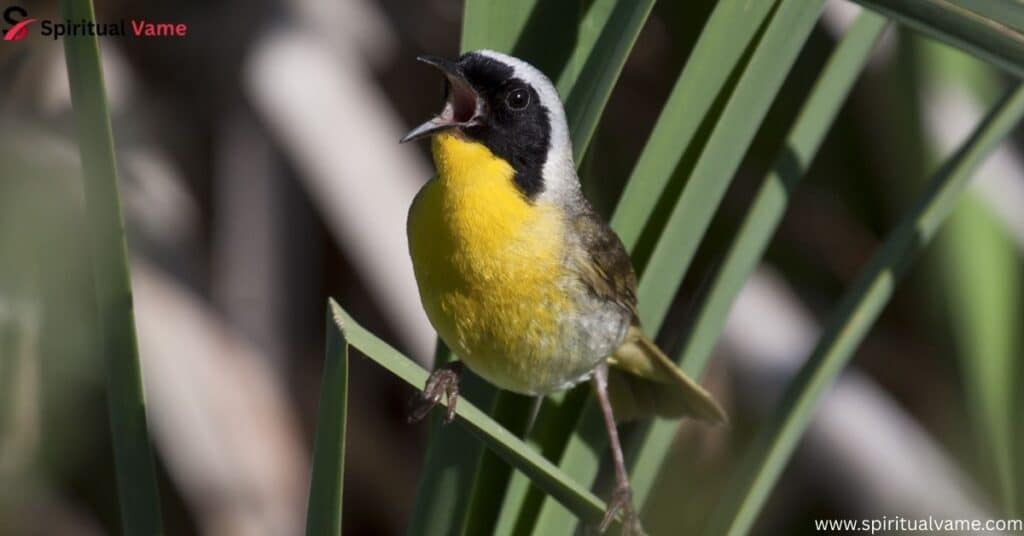
This small warbler has a bright yellow throat and chest, with males sporting a distinctive black mask. They inhabit marshes and wet thickets, often skulking in dense vegetation. Their “wichity-wichity-wichity” song is a familiar sound in suitable habitats.
American Goldfinch – Spinus tristis
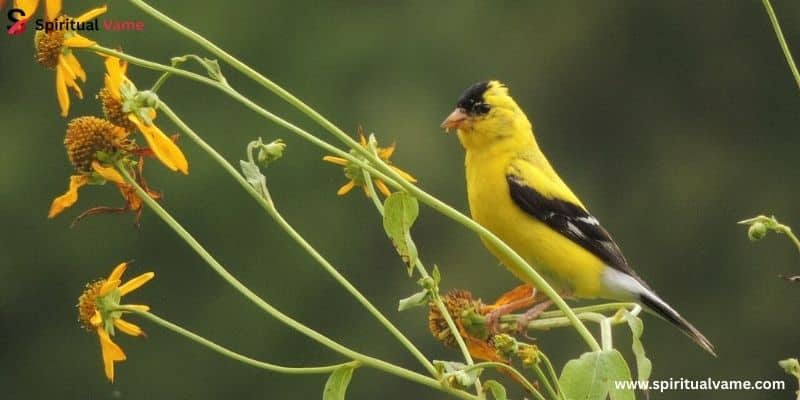
The American Goldfinch is a vibrant yellow bird with black wings and cap in males, while females are duller yellow-brown. They are common at feeders, especially those offering nyjer seed. These finches breed later in the summer, coinciding with the peak abundance of seeds.
Yellow-rumped Warbler – Setophaga coronata
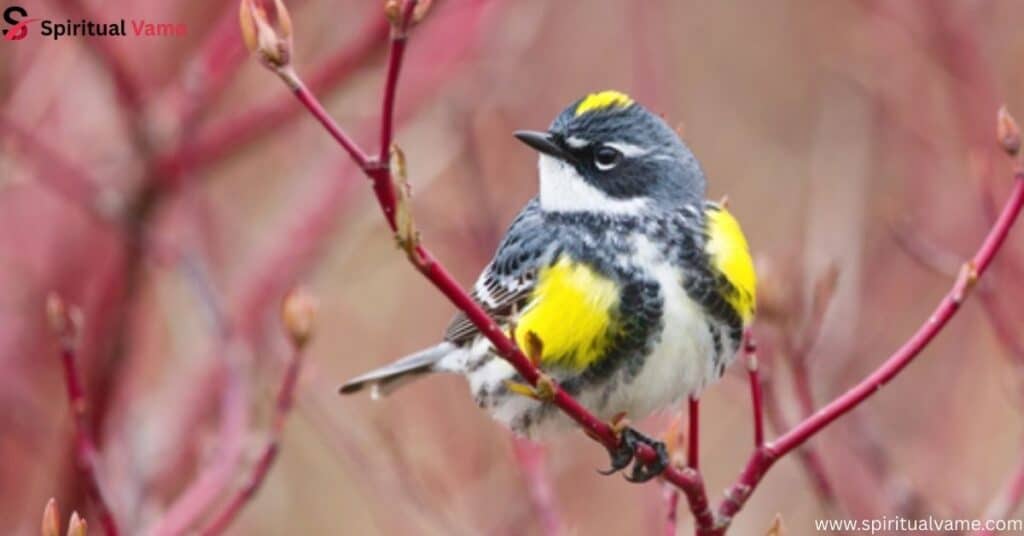
This warbler has a gray body with yellow patches on the rump, sides, and crown. They are versatile in their diet, consuming insects and berries, allowing them to winter farther north than most warblers. They are commonly seen during migration and in winter months.
Northern Flicker – Colaptes auratus
A large woodpecker with a brown body, black spots, and a bright yellow underwing and tail. They often forage on the ground for ants and beetles. Their loud “wick-a-wick-a-wick” call and drumming are common sounds in open woodlands and suburban areas.
Pine Warbler – Setophaga pinus
This warbler has olive-green upperparts and yellow underparts, with white wing bars. They are often found in pine forests, where they forage high in the canopy. Their trilled song can
be heard throughout spring and summer. Pine Warblers are more likely to visit feeders than most warblers, especially for suet and mealworms.
Black-throated Green Warbler – Setophaga virens
The Black-throated Green Warbler is easy to spot with its bright yellow face and contrasting black throat in males. Females are duller but still show a yellow face. These warblers prefer mature coniferous and mixed forests. Their steady, buzzy “zee-zee-zee-zoo-zee” song echoes in the treetops during breeding season.
Yellow Warbler – Setophaga petechia
Bright yellow and full of cheer, the Yellow Warbler is a familiar face across New Hampshire in spring and summer. Males wear chestnut streaks on their breast while females are plainer but just as sunny. They prefer shrubby wetlands and edges. Their “sweet-sweet-sweet-I’m-so-sweet” song is hard to miss.
Pine Siskin – Spinus pinus
The Pine Siskin is a small, streaky finch with subtle yellow on its wings and tail. It flocks in winter, often visiting feeders with nyjer and sunflower seeds. While it may not be flashy, it plays a vital role in boreal forest ecosystems, feeding heavily on conifer seeds.
Magnolia Warbler – Setophaga magnolia
This warbler is a colorful mix of black, white, and yellow, with males sporting bold black stripes on the chest. Found in dense coniferous thickets during migration and breeding season, the Magnolia Warbler is a favorite among birdwatchers for its brilliant appearance and lively behavior.
Northern Parula – Setophaga americana
Tiny but vibrant, the Northern Parula has a blue-gray back, greenish patch on the back, and a yellow throat and chest. They love mossy trees and breed in mixed forests with hanging lichens. Their buzzy ascending trill is a clear sign of their presence.
Nashville Warbler – Leiothlypis ruficapilla
The Nashville Warbler wears a yellow belly and throat with a gray head and white eye ring. It prefers brushy second-growth forests and can be spotted during spring migration. Quick and active, this bird rarely stays still, flitting through the foliage in search of insects.
Canada Warbler – Cardellina canadensis
This warbler is stunning with a bright yellow breast and a dramatic black necklace. It lives in cool, moist forests and is known for being one of the last warblers to arrive in spring and among the first to leave in fall. Birdwatchers treasure the rare sightings of this species.
Cape May Warbler – Setophaga tigrina
Males show a unique combination of tiger-striped underparts and a rufous cheek patch. These birds breed in the boreal forests and feast on spruce budworm. In New Hampshire, they are most often seen during migration as they refuel on nectar and insects.
Cedar Waxwing – Bombycilla cedrorum
Cedar Waxwings are sleek and silky birds with yellow-tipped tails and soft brown plumage. They gather in flocks and feed on berries, especially in winter. Known for their high-pitched call and sociable nature, waxwings bring elegance to New Hampshire’s woodlands and orchards.
Western Kingbird – Tyrannus verticalis
This flycatcher has a gray head, yellow belly, and white-edged tail. Although more common in western states, it sometimes appears in New Hampshire during migration. It’s bold and territorial, often chasing off larger birds from its perching spot.
Evening Grosbeak – Coccothraustes vespertinus
A heavyset finch with thick bills, males are golden yellow with black and white wings. Females are gray with hints of yellow. These birds travel in noisy flocks and are more common in northern forests. They are strong seed crushers and will frequent winter feeders.
Palm Warbler – Setophaga palmarum
Palm Warblers are often seen bobbing their tails while foraging on the ground. They have a rusty cap and yellow underparts, favoring open woodlands and grassy edges. Unlike many warblers, they’re more terrestrial, especially during migration in New Hampshire.
Prairie Warbler – Setophaga discolor
Don’t let the name fool you—Prairie Warblers are found in scrubby forests and old fields. Males are bright yellow with black streaks on their sides and a distinctive rising song. They prefer warmer months and breed across southern New Hampshire.
Wilson’s Warbler – Cardellina pusilla
Tiny and energetic, Wilson’s Warbler is yellow with a black cap in males. They’re most common during migration, flitting low in shrubs and thickets. Their chip calls and busy movement make them delightful to watch, if a bit tricky to follow.
Great Crested Flycatcher – Myiarchus crinitus
This flycatcher is large and loud with a bright yellow belly and reddish wings. It nests in tree cavities and uses snake skins or cellophane in its nest. It prefers open woodlands and is often seen flying out from perches to catch insects mid-air.
Eastern Meadowlark – Sturnella magna
Not a lark at all, but a member of the blackbird family, the Eastern Meadowlark is golden-yellow with a black “V” across the chest. It sings a sweet, flute-like tune and nests in tall grasslands. Sadly, its numbers are declining due to habitat loss.
Dickcissel – Spiza americana
The Dickcissel resembles a small meadowlark, with a yellow chest and black throat patch. These birds are rare in New Hampshire but sometimes appear in grasslands and open fields. Their buzzy song sounds like their name: “dick-dick-siss-siss.”
Yellow-throated Vireo – Vireo flavifrons
Bright yellow throat and belly, with olive back and bold white wing bars. These vireos are known for their lazy, sweet song that floats from the treetops. They live in deciduous forests and can be tricky to spot due to their leafy habitat.
Conclusion
New Hampshire is a treasure trove for birdwatchers who enjoy colorful species. With over 40 red, orange, and yellow birds in New Hampshire, this state offers vibrant views year-round. Whether you’re spotting a Setophaga petechia in a marsh or a Cardinalis cardinalis at your backyard feeder, these birds bring life and color to every season. Their diverse habitats—from forests to fields and wetlands—offer endless opportunities for birdwatching, photography, and learning about species identification. So grab your binoculars, head outside, and explore the brilliant birdlife that New Hampshire has to offer.

